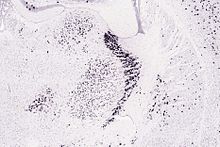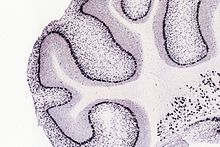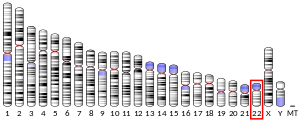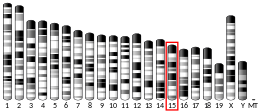Parvalbumin
| PVALB | |||||||||||||||||||||||||||||||||||||||||||||||||||
|---|---|---|---|---|---|---|---|---|---|---|---|---|---|---|---|---|---|---|---|---|---|---|---|---|---|---|---|---|---|---|---|---|---|---|---|---|---|---|---|---|---|---|---|---|---|---|---|---|---|---|---|
| |||||||||||||||||||||||||||||||||||||||||||||||||||
| Identifiers | |||||||||||||||||||||||||||||||||||||||||||||||||||
| Aliases | PVALB, D22S749, parvalbumin | ||||||||||||||||||||||||||||||||||||||||||||||||||
| External IDs | OMIM: 168890; MGI: 97821; HomoloGene: 2137; GeneCards: PVALB; OMA:PVALB - orthologs | ||||||||||||||||||||||||||||||||||||||||||||||||||
| |||||||||||||||||||||||||||||||||||||||||||||||||||
| |||||||||||||||||||||||||||||||||||||||||||||||||||
| |||||||||||||||||||||||||||||||||||||||||||||||||||
| |||||||||||||||||||||||||||||||||||||||||||||||||||
| |||||||||||||||||||||||||||||||||||||||||||||||||||
| Wikidata | |||||||||||||||||||||||||||||||||||||||||||||||||||
| |||||||||||||||||||||||||||||||||||||||||||||||||||
| Parvalbumin | |
|---|---|
| Identifiers | |
| Symbol | ? |
| InterPro | IPR008080 |
Parvalbumin (PV) is a calcium-binding protein with low molecular weight (typically 9-11 kDa). In humans, it is encoded by the PVALB gene. It is a member of the albumin family; it is named for its size (parv-, from Latin parvus which means "small") and its ability to coagulate.
It has three EF hand motifs and is structurally related to calmodulin and troponin C. Parvalbumin is found in fast-contracting muscles, where its levels are highest, as well as in the brain and some endocrine tissues.
Parvalbumin is a small, stable protein containing EF-hand type calcium binding sites. It is involved in calcium signaling. Typically, this protein is broken into three domains, domains AB, CD and EF, each individually containing a helix-loop-helix motif.[5] The AB domain houses a two amino-acid deletion in the loop region, whereas domains CD and EF contain the N-terminal and C-terminal, respectively.[5]
Calcium binding proteins like parvalbumin play a role in many physiological processes, namely cell-cycle regulation, second messenger production, muscle contraction, organization of microtubules and phototransduction.[6] Therefore, calcium-binding proteins must distinguish calcium in the presence of high concentrations of other metal ions. The mechanism for the calcium selectivity has been extensively studied.[6][7]
Location and function
[edit] |
 |
In neural tissue
[edit]Parvalbumin is present in some GABAergic interneurons in the nervous system, especially the reticular thalamus,[8] and expressed predominantly by chandelier and basket cells in the cortex. In the cerebellum, PV is expressed in Purkinje cells and molecular layer interneurons.[9] In the hippocampus, PV+ interneurons are subdivided into basket, axo-axonic, and bistratified cells, each subtype targeting distinct compartments of pyramidal cells.[10]
PV interneurons' connections are mostly perisomatic (around the cell body of neurons). Most of the PV interneurons are fast-spiking. They are also thought to give rise to gamma waves recorded in EEG.
PV-expressing interneurons represent approximately 25% of GABAergic cells in the primate DLPFC.[11][12] Other calcium-binding protein markers are calretinin (most abundant subtype in DLPFC, about 50%) and calbindin. Interneurons are also divided into subgroups by the expression of neuropeptides such as somatostatin, neuropeptide Y, cholecystokinin.
In muscular tissue
[edit]PV is known to be involved in relaxation of fast-twitch muscle fibers.[13][14] This function is associated with the PV role in calcium sequestration.
During muscle contraction, the action potential stimulates voltage-sensitive proteins in the T-tubule membrane. These proteins stimulate the opening of Ca2+ channels in the sarcoplasmic reticulum, leading to release of Ca2+ in the sarcoplasm. The Ca2+ ions bind to troponin, which causes the displacement of tropomyosin, a protein that prevents myosin walking along actin. The displacement of tropomyosin exposes the myosin-binding sites on actin, permitting muscle contraction.[15] This way, while muscle contraction is driven by Ca2+ release, muscle relaxation is driven by Ca2+ removal from sarcoplasm. Along with Ca2+ pumps, PV contributes to Ca2+ removal from cytoplasm: PV binds to Ca2+ ions in the sarcoplasm, and then shuttles it to the sarcoplasmic reticulum.[16]
Clinical significance
[edit]Decreased PV and GAD67 expression was found in PV+ GABAergic interneurons in schizophrenia.[17][18]
Parvalbumin has been identified as the major allergen causing fish meat allergy (but not shellfish allergy).[19][20][21][22] Most bony fishes manifest β-parvalbumins as major allergens and cartilaginous fishes such as sharks and rays manifest α-parvalbumins as major allergens; allergenicity to bony fishes has a low cross-reactivity to cartilaginous fishes[20] and also chicken meat.[23]
Parvalbumins, an ancient family of proteins
[edit]Parvalbumins and their genes have only been found in jawed vertebrate species so far. From the evolutionary level of sharks, already three major lineages of parvalbumins can be distinguished[24]: (1) α-parvalbumins, which include the above discussed human "parvalbumin"; (2) oncomodulins (sometimes called "β-1 parvalbumins"), which are also found in human and mouse; and (3) β-2 parvalbumins, which are the major allergens in most bony fish and were lost in human and mouse but conserved in some primitive mammals.
All parvalbumins share a highly conserved structure (see the figure)[24], which explains their high level of sequence conservation, resulting in the above-mentioned cross-reactivity in allergenic reactions against different bony fish species and even species from other animal clades such as chicken.[25]

Bony fishes have, depending on the species, combined for all three parvalbumin lineages between 7 and 22 genes.[26][24] Although in most bony fishes the β-2 parvalbumins are the major allergens, in some bony fishes the α-parvalbumins are the highest expressed in muscle and were identified as the allergens.[25] The allergen nomenclature is partly based on the order of allergen detection per species, and therefore identical allergen numbers in different fish species do not always refer to the same gene (see the table).[25]

History
[edit]The protein was discovered in 1965 as a component of the fast-twitching white muscle of fish. It was described as a low molecular-weight "albumin".[27] It is unknown who coined the term parvalbumin, but the word is already in use by 1967.[28]
References
[edit]- ^ a b c ENSG00000100362 GRCh38: Ensembl release 89: ENSG00000274665, ENSG00000100362 – Ensembl, May 2017
- ^ a b c GRCm38: Ensembl release 89: ENSMUSG00000005716 – Ensembl, May 2017
- ^ "Human PubMed Reference:". National Center for Biotechnology Information, U.S. National Library of Medicine.
- ^ "Mouse PubMed Reference:". National Center for Biotechnology Information, U.S. National Library of Medicine.
- ^ a b Cates MS, Teodoro ML, Phillips GN (March 2002). "Molecular mechanisms of calcium and magnesium binding to parvalbumin". Biophysical Journal. 82 (3): 1133–1146. Bibcode:2002BpJ....82.1133C. doi:10.1016/S0006-3495(02)75472-6. PMC 1301919. PMID 11867433.
- ^ a b Cates MS, Berry MB, Ho EL, Li Q, Potter JD, Phillips GN (October 1999). "Metal-ion affinity and specificity in EF-hand proteins: coordination geometry and domain plasticity in parvalbumin". Structure. 7 (10): 1269–1278. doi:10.1016/S0969-2126(00)80060-X. PMID 10545326.
- ^ Dudev T, Lim C (January 2014). "Competition among metal ions for protein binding sites: determinants of metal ion selectivity in proteins". Chemical Reviews. 114 (1): 538–556. doi:10.1021/cr4004665. PMID 24040963.
- ^ Cowan RL, Wilson CJ, Emson PC, Heizmann CW (December 1990). "Parvalbumin-containing GABAergic interneurons in the rat neostriatum". The Journal of Comparative Neurology. 302 (2): 197–205. doi:10.1002/cne.903020202. PMID 2289971. S2CID 38540563.
- ^ Schwaller B, Meyer M, Schiffmann S (December 2002). "'New' functions for 'old' proteins: the role of the calcium-binding proteins calbindin D-28k, calretinin and parvalbumin, in cerebellar physiology. Studies with knockout mice". Cerebellum. 1 (4): 241–258. doi:10.1080/147342202320883551. PMID 12879963. S2CID 25917565.
- ^ Klausberger T, Marton LF, O'Neill J, Huck JH, Dalezios Y, Fuentealba P, et al. (October 2005). "Complementary roles of cholecystokinin- and parvalbumin-expressing GABAergic neurons in hippocampal network oscillations". The Journal of Neuroscience. 25 (42): 9782–9793. doi:10.1523/JNEUROSCI.3269-05.2005. PMC 6725722. PMID 16237182.free full text
- ^ Condé F, Lund JS, Jacobowitz DM, Baimbridge KG, Lewis DA (March 1994). "Local circuit neurons immunoreactive for calretinin, calbindin D-28k or parvalbumin in monkey prefrontal cortex: distribution and morphology". The Journal of Comparative Neurology. 341 (1): 95–116. doi:10.1002/cne.903410109. PMID 8006226. S2CID 2583429.
- ^ Gabbott PL, Bacon SJ (January 1996). "Local circuit neurons in the medial prefrontal cortex (areas 24a,b,c, 25 and 32) in the monkey: II. Quantitative areal and laminar distributions". The Journal of Comparative Neurology. 364 (4): 609–636. doi:10.1002/(SICI)1096-9861(19960122)364:4<609::AID-CNE2>3.0.CO;2-7. PMID 8821450. S2CID 27397665.
- ^ Celio MR, Heizmann CW (June 1982). "Calcium-binding protein parvalbumin is associated with fast contracting muscle fibres". Nature. 297 (5866): 504–506. Bibcode:1982Natur.297..504C. doi:10.1038/297504a0. PMID 6211622. S2CID 4360112.
- ^ Heizmann CW, Berchtold MW, Rowlerson AM (December 1982). "Correlation of parvalbumin concentration with relaxation speed in mammalian muscles". Proceedings of the National Academy of Sciences of the United States of America. 79 (23): 7243–7247. Bibcode:1982PNAS...79.7243H. doi:10.1073/pnas.79.23.7243. PMC 347315. PMID 6961404.
- ^ Alberts B, Johnson A, Lewis J, Raff M, Roberts K, Walter P (2002). "Molecular Motors". Molecular Biology of the Cell (4th ed.). New York: Garland Science. ISBN 0-8153-3218-1.
- ^ Arif SH (April 2009). "A Ca(2+)-binding protein with numerous roles and uses: parvalbumin in molecular biology and physiology". BioEssays. 31 (4): 410–421. doi:10.1002/bies.200800170. PMID 19274659. S2CID 42448973.
- ^ Hashimoto T, Volk DW, Eggan SM, Mirnics K, Pierri JN, Sun Z, et al. (July 2003). "Gene expression deficits in a subclass of GABA neurons in the prefrontal cortex of subjects with schizophrenia". The Journal of Neuroscience. 23 (15): 6315–6326. doi:10.1523/JNEUROSCI.23-15-06315.2003. PMC 6740534. PMID 12867516.
- ^ Nakazawa K, Zsiros V, Jiang Z, Nakao K, Kolata S, Zhang S, et al. (March 2012). "GABAergic interneuron origin of schizophrenia pathophysiology". Neuropharmacology. 62 (3): 1574–1583. doi:10.1016/j.neuropharm.2011.01.022. PMC 3090452. PMID 21277876.
- ^ Leung NY, Wai CY, Shu S, Wang J, Kenny TP, Chu KH, et al. (June 2014). "Current immunological and molecular biological perspectives on seafood allergy: a comprehensive review". Clinical Reviews in Allergy & Immunology. 46 (3): 180–197. doi:10.1007/s12016-012-8336-9. PMID 23242979. S2CID 29615377.
- ^ a b Stephen JN, Sharp MF, Ruethers T, Taki A, Campbell DE, Lopata AL (March 2017). "Allergenicity of bony and cartilaginous fish - molecular and immunological properties". Clinical and Experimental Allergy. 47 (3): 300–312. doi:10.1111/cea.12892. hdl:11343/292433. PMID 28117510. S2CID 22539836.
- ^ Sharp MF, Stephen JN, Kraft L, Weiss T, Kamath SD, Lopata AL (February 2015). "Immunological cross-reactivity between four distant parvalbumins-Impact on allergen detection and diagnostics". Molecular Immunology. 63 (2): 437–448. doi:10.1016/j.molimm.2014.09.019. PMID 25451973.
- ^ Fernandes TJ, Costa J, Carrapatoso I, Oliveira MB, Mafra I (October 2017). "Advances on the molecular characterization, clinical relevance, and detection methods of Gadiform parvalbumin allergens". Critical Reviews in Food Science and Nutrition. 57 (15): 3281–3296. doi:10.1080/10408398.2015.1113157. PMID 26714098. S2CID 22118352.
- ^ Kuehn A, Codreanu-Morel F, Lehners-Weber C, Doyen V, Gomez-André SA, Bienvenu F, et al. (December 2016). "Cross-reactivity to fish and chicken meat - a new clinical syndrome". Allergy. 71 (12): 1772–1781. doi:10.1111/all.12968. PMID 27344988.
- ^ a b c Dijkstra JM, Kondo Y (November 2022). "Comprehensive Sequence Analysis of Parvalbumins in Fish and Their Comparison with Parvalbumins in Tetrapod Species". Biology. 11 (12): 1713. doi:10.3390/biology11121713. PMC 9774829. PMID 36552222.
- ^ a b c Dijkstra JM, Kuehn A, Sugihara E, Kondo Y (October 2024). "Exploring Fish Parvalbumins through Allergen Names and Gene Identities". Genes. 15 (10): 1337. doi:10.3390/genes15101337. PMC 11507022. PMID 39457461.
- ^ Mukherjee S, Bartoš O, Zdeňková K, Hanák P, Horká P, Musilova Z (December 2021). "Evolution of the Parvalbumin Genes in Teleost Fishes after the Whole-Genome Duplication". Fishes. 6 (4): 70. doi:10.3390/fishes6040070. ISSN 2410-3888.
- ^ Hamoir G, Konosu S (July 1965). "Carp Myogens of White and Red Muscles. General Composition and Isolation of Low-Molecular-Weight Components of Abnormal Amino Acid Composition". The Biochemical Journal. 96 (1): 85–97. doi:10.1042/bj0960085. PMC 1206910. PMID 14343157.
- ^ Pechère JF (January 1968). "Muscular parvalbumins as homologous proteins". Comparative Biochemistry and Physiology. 24 (1): 289–295. doi:10.1016/0010-406x(68)90978-x. PMID 5645516.
External links
[edit]- Parvalbumins at the U.S. National Library of Medicine Medical Subject Headings (MeSH)
- Baig I, Bertini I, Del Bianco C, Gupta YK, Lee YM, Luchinat C, et al. (May 2004). "Paramagnetism-based refinement strategy for the solution structure of human alpha-parvalbumin". Biochemistry. 43 (18): 5562–5573. doi:10.1021/bi035879k. PMID 15122922.




